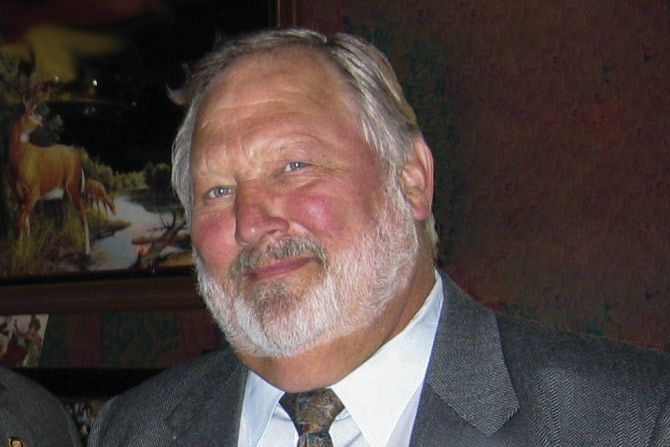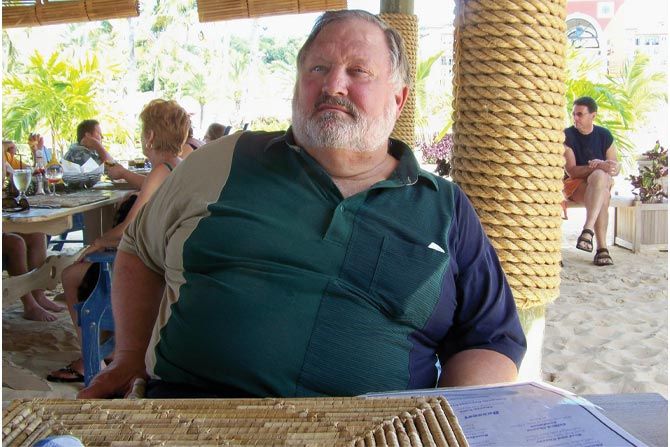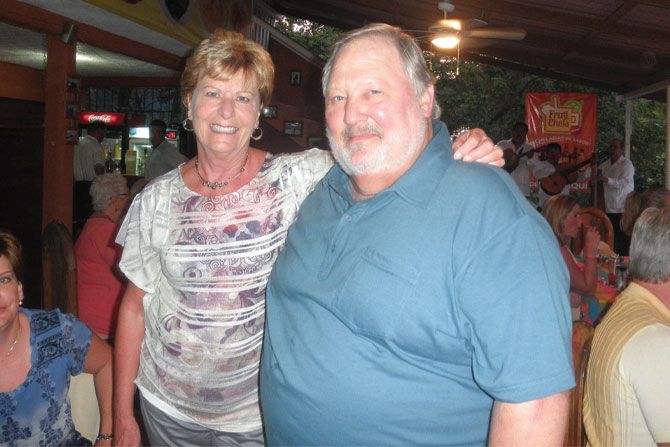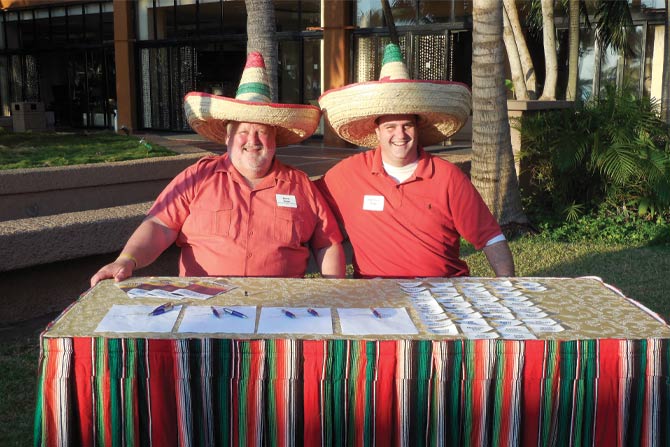Jerry Sage, retired executive of the Missouri Independent Bankers Association, died Sept. 3, 2022.
For over 40 years, Jerry battled to keep community banks open for business, and the responsibility could not have fallen on more prepared shoulders. But before he became the defender of independent banking in Missouri, Jerry gained a tenacity for a different kind of adventure: hunting for the lost treasure of Valverde in the Amazon jungle and on the slopes of the Andes Mountains of Ecuador.
Legend claims the Valverde treasure was named after a Spanish soldier who married an lncan woman. Further, the story says Valverde was ostracized by his countrymen because of his wife. He often complained of poverty until one day, she promised to make him the richest of the Spaniards. That night, she led him by hidden trails through the mountains until they reached a glittering cavern filled with a vast treasure of Incan gold. Just a small portion of the wealth made Valverde immeasurably wealthy.
At his death, Valverde willed the map — showing the location of the treasure — to the king of Spain. Afterward, however, representatives of the king repeatedly failed to find the treasure. Many more treasure hunters also failed, as they were unable to endure the biting cold of the high altitudes of the Andes or they could not penetrate the Amazon jungle.
Jerry Sage was in those mountains in 1967.
His expedition climbed to 16,000 feet above sea level. After more than 40 days in the jungle, natives serving as guides got cold feet. “According to legend, there were cannibalistic Indians guarding the treasure. So, one night our guides decided they weren’t going to stay with us anymore,” Jerry said. “They got up in the middle of the night, stole our gas stoves and took off. That was the most frightening moment I ever spent in the jungle.”
In the cold and wet mountains, it was very hard to build a fire. “We thought we had rice and double smoked bacon. We found what we thought was rice was actually raw peanuts,” said Jerry. “Luckily for us, water runs downhill and back toward civilization. The Amazon River wasn’t far away. After the bacon, we ate the moss that grew at the base of the trees. It took us 12 days to get out.”
Despite his close call, he made more expeditions in search of the lost treasure of Valverde before he was hired as the executive director of MlBA in 1975. There were more than 600 independent community banks in the state at the time. The man who had barely survived the Amazon jungle, but had the grit to return to try again, became responsible for the year-in-year-out fight to keep the number of community banks from dropping.
Becoming a Lobbyist
By the time Jerry Sage became executive director of MlBA — the oldest state independent banker’s association in the country — they had been fighting to keep large banks from branching into Missouri since 1958.
The first time Jerry lobbied for the association was in 1975. He did it as a favor for a friend, Gene McFadin, an attorney who had been hired by MlBA as its lobbyist. Jerry remembers that first appearance in the state Senate as a comical one. “Gene was tied up with work from his law firm; he asked me to testify for him in a banking committee meeting.
I remember him saying, ‘You don’t have to do anything but say the Independent Bankers of Missouri oppose the legislation,’” Jerry recalled. “I remember, when it came my time to speak, I got up on the high dais in front of this committee, and it felt like I was on trial before a tribunal. My voice was so squeaky, and I was so embarrassed; I’ll never forget it.”
But despite his wobbly start, Jerry Sage soon showed himself as an effective lobbyist. “When there was a statewide branch banking referendum in 1958, a bunch of us old independent bankers hired McFadin and beat it,” said Bill Breedlove, a retired banker who, at that time, owned a $1 million bank in Rogersville, Missouri. “After that, Jerry did a great job as McFadin’s assistant; I don’t know anyone who could’ve done a better job.”
During the 1980s, a number of banks were gradually removed. As large banks began branching into the various towns and cities, the state’s community banks faced a dilemma. They had a lending limit of just under $1 million, and when a customer exceeded that limit, the bank would have to participate with a correspondent bank or lose the customer. With large banks moving into the market, community banks had much fewer options for correspondent partners, and any one of the large banks could move into town equipped with customer information from their correspondent business.
Then in 1982, after five years of pushing, MIBA convinced the state legislature to pass a bill sparing community banks from participating in loans with their large bank competitors. “The bill allowed banks to own up to 5% stock in another bank. Independent bankers could now create their own correspondent bank,” Jerry said. “And we could form a bankers’ bank in Missouri.”
Missouri Independent Bank
If MIBA was going to organize a bankers’ bank, the venture needed broad support from bankers around the state. MIBA commissioned a feasibility study and began organizing meetings of community bank CEOs across the state. “Jerry was instrumental in getting the study done, in getting the word out and in educating bankers about a bankers’ bank,” said Cam Fine, president and CEO of the Independent Community Bankers of America. Fine was hired to organize and charter the bank in January 1983. “The first time I met Sage was in April 1984 in Jefferson City, Missouri, at a MlBA board meeting. I was introduced as the brand-new president of Missouri Independent Bank. We were just kids then,” he said.
Sage and Fine traveled the state together, enlisting investors for the new bank. By mid-1984, Fine, MIBA and Sage gathered the capital to open the bank. The charter for Missouri Independent Bank was awarded by the commissioner of banking at MIBA’s annual meeting in September 1984. In the years that followed, Missouri Independent Bank, now called Midwest Independent Bank, was an important partner to community banks as it competed against larger banks. It was Jerry Sage who helped make community banks possible.
Managing a Successful Association
Over the years, Jerry also proved effective at killing bills in the state legislature that hurt community banks. “Just about every session and just about every year it was a battle,” Cam Fine said, “[Jerry] was either blocking something bad or helping something good through. He was very successful beating back legislation that would limit or harm community banks.”
Jerry had a strong influence on legislators, said Max Cook, a former president and CEO of the Missouri Bankers Association. Whether Missouri banks were fighting to remove a cap on insufficient funds fees, battling credit union overreach or new burdensome mortgage laws, community banks had an effective advocate in Sage, Cook said. “Jerry and I have been on the same page here in the state for many years, and we have worked jointly on issues for years as well,” he said. “The lobbying business is one of building relationships. Jerry was one to have influential and meaningful relationships that can gain success. When Jerry walks into a room with elected officials, they like him. He has a kind of magnetism.”
“Sage has one of the strongest community banking associations in the country,” Fine said. “We have 46 state affiliate associations. We have outstanding execs around the country. I wish all our state execs were like Sage. If they were, community banking would be better served. There is a reason he has done this for 40 years. We broke the mold with Jerry.”
“The Legend of Noel”
When preparing his retirement article, one last question put to Sage by the MIBA staff was, “If you could pick your own epitaph, what would it be?” He jokingly said, “The Legend of Noel!” A fairly new association employee named Valerie had never heard the story, and she asked him about it.
Laughingly, Jerry retold the tale of a college-era trip he’d taken with several friends and companions to southwestern Missouri and the little resort town of Noel on Shadow Lake, situated on the Elk River. It seemed the group planned to camp out in a cave in the bluffs overlooking the river and on the old 71 Highway near Noel. As the travelers climbed the bluff above the highway and river to explore the cave and its evening accommodations, one of the ladies climbed a little higher to get a better view and became afraid. Jerry, being the gentleman he was, climbed up and offered her his hand in assistance. However, being the graceful fellow that he was, he subsequently tripped, stumbled, and fell over the edge of the bluff, looking down at 71 Highway some 60 feet below.
At that moment, he spotted a small four-inch oak tree growing a few feet below, and he determined it would be the instrument of his salvation. No such luck. As he grabbed the tree, it pulled away from its roots. Jerry and the tree both ended up in the middle of 71 Highway. At this point, the badly bruised, contused and slightly inebriated body of Jerry Sage was hauled by ambulance to the hospital in Gravette, Arkansas, where medical personnel commenced resuscitation procedures. Several weeks later, Jerry was released from the hospital and began a fairly long and painful convalescence back to semi-normality.
The Rest of the Story
Some 12 years later, Jerry, his friend and their wives returned to Noel on another trip where they intended to float the Elk River. They stayed at a small resort in Noel the night before the trip was to commence, and, the next morning, were collected at the motel by the float service with a pickup truck, trailer and canoes to be taken to the “put in” point on the Elk River at Pineville. Of course, Jerry and his friend sat in the back of the pickup truck on the coolers, and the two ladies joined the driver in the front seat. The driver pulled out of Noel along 71 Highway to north Noel and the bluff site of the Sage Fall from 12-plus years before.
As they approached, the local truck driver informed the girls in the cab that this bluff had particular significance to the locals in Noel in that they called it the site of “The Legend of Noel.” He told a story to the girls of the man who had been up on the bluff and lost his footing, falling headlong into the middle of 71 Highway some 60 feet, and had miraculously survived. He told the ladies that he was now known as “The Legend of Noel.” The friend of Jerry’s wife, not aware of the previous incident years before, asked the driver what happened to the man. Jerry’s wife said, “Take a peek in the back of the pickup truck. He’s sitting back there eating cold pizza and drinking beer. That’s your ‘Legend of Noel,’ right there!”
Jerry laughed and proclaimed, “I’ve had a lot of fun and a lot of great memories. Not a bad way to move into Phase Two with the lady who made it possible, my wife, Judy!”
A True Legend
After decades of large bank branching and steadily increasing regulation, Jerry Sage left Missouri independent banking with 310 state-chartered banks. Through his efforts, Missouri independent banks didn’t lose the war on branch banking until the Dodd-Frank Act removed the requirement that large banks buy a bank in the state before branching out. “The credit doesn’t go to me,” Jerry stated. “It goes to the bankers that supported me. Their contribution of time and effort is what made my career possible. I am very appreciative of the opportunities community banking gave to my family over the years.”
After he retired, Jerry spent as much time as possible with Judy and at his cabin on the shores of Missouri’s Sac River. Missouri bankers remember the man who fought to keep their community banks open for business with the nickname chosen by his friends: they called him Sage.











